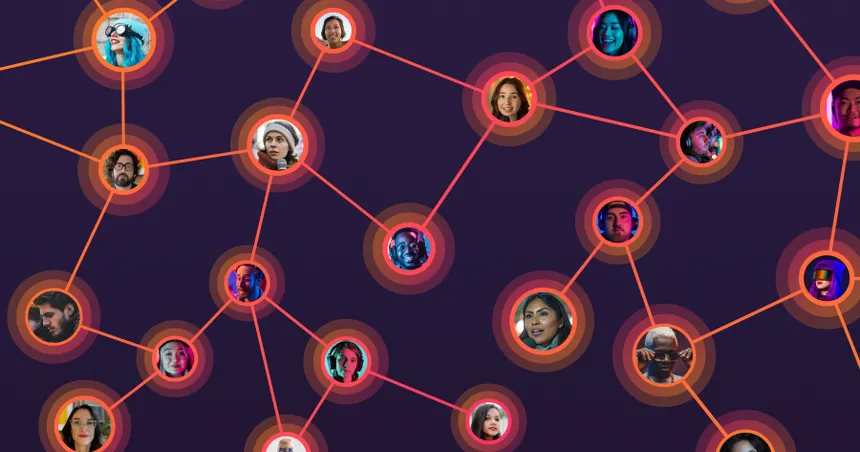
Generative AI is rapidly transforming numerous fields, from art and entertainment to healthcare and engineering. It represents a paradigm shift in how we create and interact with technology, moving from systems that simply execute instructions to those that can learn, adapt, and generate novel content. This lesson will provide a comprehensive introduction to generative AI, exploring its core concepts, diverse applications, and the fundamental principles that underpin its functionality. By the end of this lesson, you will have a solid understanding of what generative AI is, how it differs from traditional AI, and the exciting possibilities it unlocks.
Defining Generative AI
Generative AI refers to a class of artificial intelligence algorithms that learn from existing data to generate new, similar data. Unlike traditional AI, which typically focuses on tasks like classification or prediction, generative AI aims to create something entirely new. It learns the underlying patterns and structures within a dataset and then uses this knowledge to produce novel outputs that resemble the original data but are not exact copies.
Key Characteristics
- Learning from Data: Generative AI models are trained on large datasets to understand the characteristics of the data they are meant to generate.
- Generating New Content: The primary goal is to create new, original content that is similar to the training data but not identical.
- Unsupervised or Self-Supervised Learning: Many generative AI models use unsupervised or self-supervised learning techniques, meaning they don’t require explicit labels to learn patterns in the data.
- Diverse Applications: Generative AI can be applied to various data types, including images, text, audio, and video.
Generative vs. Discriminative Models
It’s helpful to contrast generative models with discriminative models, which are more common in traditional AI.
- Generative Models: Learn the joint probability distribution P(X, Y), where X is the input data and Y is the label. They can generate new data points X given a label Y, or infer the label Y given a data point X.
- Discriminative Models: Learn the conditional probability distribution P(Y|X), which is the probability of a label Y given the input data X. They are primarily used for classification or regression tasks.
Example:
Imagine you have a dataset of cat and dog images.
- A discriminative model would learn to distinguish between cats and dogs based on their features. Given a new image, it would predict whether it’s a cat or a dog.
- A generative model would learn the underlying features of both cats and dogs and be able to generate new images of cats and dogs that don’t exist in the original dataset.
Core Principles of Generative AI
Several core principles underpin the functionality of generative AI models:
Probability Distributions
Generative AI models learn the probability distribution of the training data. This distribution represents the likelihood of different data points occurring. By understanding this distribution, the model can sample new data points that are likely to occur within the same distribution.
Example:
If you train a generative model on a dataset of handwritten digits, it will learn the probability distribution of pixel values for each digit. This allows it to generate new images of handwritten digits that resemble the original dataset.
Latent Space
Many generative AI models use a latent space, which is a lower-dimensional representation of the data. The model learns to encode the input data into this latent space and then decode it back into the original data space. This process forces the model to learn a compressed and meaningful representation of the data, which can then be used to generate new data points.
Example:
In image generation, the latent space might represent features like object shape, color, and texture. By manipulating these features in the latent space, you can generate different variations of the same object.
Sampling
Sampling is the process of generating new data points from the learned probability distribution or latent space. The model randomly selects values from the distribution or latent space and then decodes them into the original data space.
Example:
In text generation, the model might sample words from a probability distribution based on the preceding words in a sentence. This allows it to generate coherent and grammatically correct text.
Types of Generative AI Tasks
Generative AI can be used for a wide range of tasks, including:
Image Generation
Creating new images from scratch or modifying existing images.
Examples:
- Generating realistic images of people who don’t exist.
- Creating artwork in a specific style.
- Adding or removing objects from an image.
- Increasing the resolution of an image.
Text Generation
Generating new text, such as articles, poems, or code.
Examples:
- Writing product descriptions.
- Generating social media posts.
- Creating chatbots that can converse with humans.
- Summarizing long documents.
Audio Generation
Creating new audio, such as music, speech, or sound effects.
Examples:
- Generating original music compositions.
- Creating realistic speech from text.
- Generating sound effects for video games or movies.
- Removing noise from audio recordings.
Video Generation
Creating new videos from scratch or modifying existing videos.
Examples:
- Generating realistic videos of people talking.
- Creating special effects for movies.
- Animating characters.
- Changing the style of a video.
Examples of Generative AI in Action
Let’s explore some concrete examples of how generative AI is being used in various industries:
Art and Design
Generative AI is revolutionizing the art and design world by enabling artists and designers to create new and innovative works.
Example 1: Creating Unique Artwork
Generative AI models can be trained on datasets of artwork from different styles and periods. The model can then generate new artwork that combines elements from these different styles, creating unique and original pieces.
Example 2: Designing New Products
Generative AI can be used to design new products by exploring different design options and optimizing for specific criteria, such as aesthetics, functionality, and manufacturability.
Hypothetical Scenario:
Imagine a furniture company using generative AI to design a new chair. The model could be trained on a dataset of existing chair designs and then generate new designs that are both aesthetically pleasing and ergonomically sound. The company could then use these designs to create prototypes and test them with customers.
Marketing and Advertising
Generative AI is transforming marketing and advertising by enabling marketers to create personalized and engaging content at scale.
Example 1: Generating Personalized Ads
Generative AI models can be used to generate personalized ads that are tailored to the individual interests and preferences of each user.
Example 2: Creating Product Descriptions
Generative AI can be used to automatically generate product descriptions for e-commerce websites, saving marketers time and effort.
Hypothetical Scenario:
Imagine an e-commerce company using generative AI to create personalized product recommendations for each customer. The model could analyze the customer’s past purchases, browsing history, and demographic information to generate recommendations that are highly relevant to their interests.
Healthcare
Generative AI is being used in healthcare to accelerate drug discovery, improve diagnosis, and personalize treatment.
Example 1: Drug Discovery
Generative AI models can be used to design new drug molecules with specific properties, accelerating the drug discovery process.
Example 2: Medical Image Analysis
Generative AI can be used to analyze medical images, such as X-rays and MRIs, to detect diseases and abnormalities.
Hypothetical Scenario:
Imagine a hospital using generative AI to analyze patient data and predict the likelihood of developing certain diseases. The model could analyze the patient’s medical history, lifestyle factors, and genetic information to identify individuals who are at high risk and recommend preventative measures.
Generative AI at Imaginarium Inc.
Recall Imaginarium Inc., our fictional company introduced earlier. They’re exploring how generative AI can revolutionize their product development and marketing strategies.
Product Development: Imaginarium Inc. can use generative AI to create new toy designs. By training a model on their existing product catalog and market trends, they can generate novel toy concepts that are likely to be popular with consumers. This can significantly reduce the time and cost associated with traditional product design processes.
Marketing: Imaginarium Inc. can leverage generative AI to create personalized marketing campaigns. For example, they can generate unique ads tailored to individual customer preferences based on their past purchases and browsing history. This can lead to higher engagement rates and increased sales.
Exercises
- Brainstorming: Think of three more potential applications of generative AI in industries not mentioned above. For each application, describe the input data, the desired output, and the potential benefits.
- Generative vs. Discriminative: Explain the difference between generative and discriminative models in your own words. Provide an example of a task that is better suited for a generative model and a task that is better suited for a discriminative model.
- Latent Space Exploration: Imagine you are using a generative AI model to create new faces. What features might be represented in the latent space? How could you manipulate these features to generate different types of faces?
- Ethical Considerations: Discuss one potential ethical concern related to the use of generative AI. How can we mitigate this concern?
Next Steps
Now that you have a foundational understanding of what generative AI is, the next step is to explore the different types of generative AI models, including GANs, VAEs, and Transformers. Understanding the strengths and weaknesses of each model will allow you to choose the right tool for the job when tackling specific generative AI tasks.






